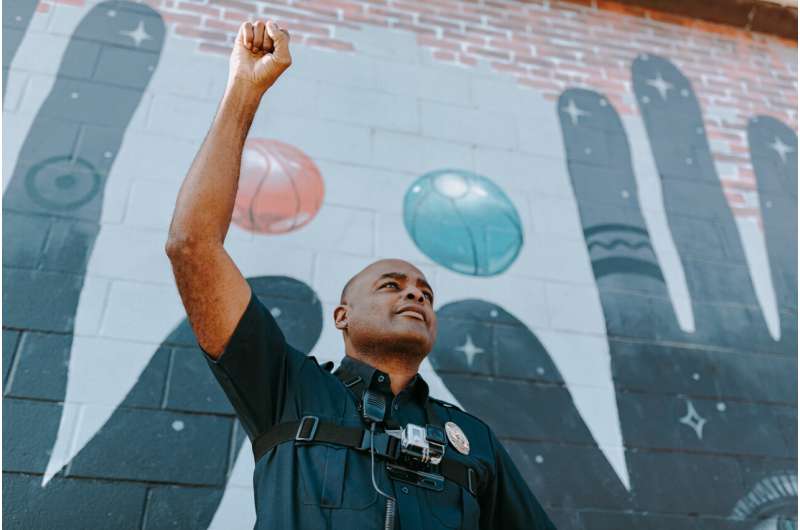Young people may be more likely to believe in conspiracy theories that deny COVID facts: How to respond

The COVID pandemic has been a shock. Practically nobody alive today has previously encountered a virus so contagious that it spreads worldwide, infects at least half a billion people, kills millions, and brings everyday life to a halt. It simply beggars belief.
In this climate, it’s not entirely surprising that there are some people who wish to dispute what’s happening. COVID denial occurs on a spectrum, from playing down the effects of the virus, to denying its existence altogether through belief in “hoax” conspiracy theories.
While all kinds of people can hold these beliefs, my research team and I have found that younger people are often more likely to believe in COVID conspiracy theories compared with older people.
We don’t fully understand why this is. But whatever the reasons, belief in conspiracy theories can be incredibly damaging. So we must resist, and engage with those who deny the facts where possible.
Our research
We examined the results of 133 studies from around the world to investigate what drives belief in COVID conspiracy theories, and who is more likely to believe in them. While hoax conspiracy theories were part of this, our research looked at conspiracy beliefs more broadly.
We observed that a combination of factors likely underpin belief in COVID conspiracy theories. For example, certain personality traits, like paranoia and narcissism, and cognitive traits, such as lower levels of analytical and scientific thinking, have been linked to these conspiracy beliefs.
The majority of studies that we reviewed showed that younger people are more likely to believe in COVID conspiracy theories than older people. One possible reason for this may relate to social and cultural contexts, which, in addition to individual traits, also correlate with belief in conspiracy theories.
In particular, we found that people who are disadvantaged, who distrust the government, and who feel less in control of their lives are more likely to believe in COVID conspiracy theories. This context might more often apply to younger people, who may be living on lower incomes, for example.
Staying vigilant
Belief in hoax conspiracy theories is generally accompanied by a refusal to engage in the appropriate protective behaviors (for example, mask-wearing or getting vaccinated). This can endanger conspiracy theorists as well as those around them.
While it should be easy for most of us to discern hoax conspiracy theories from the truth, it can be more difficult to protect ourselves against misinformation that disputes the severity or magnitude of the disease. Though less extreme, this can be damaging too.
For example, “COVID minimizers” suggest that infection or death rates are not as severe as official reports indicate. Presenting the threat from COVID as less than it actually is means people who come to believe such ideas may see taking precautions as less important, exacerbating the spread of the virus.
Similarly, as the pandemic has progressed, we sometimes hear people saying the latest variants are “mild” or than the pandemic is “over.” While the average symptoms of omicron might be less severe than those of earlier variants, this stance can at best misunderstand or at worst deny that COVID is still a virus to be reckoned with.
For example, long COVID can be debilitating even in formerly healthy young adults. And evidence is accumulating that COVID can affect the brain, including through increased rates of diseases like dementia, for instance.
We have to be mindful of not succumbing to the idea that the pandemic is over or no longer serious. This is not to say that we will need to have COVID restrictions forever. Rather, governments need to invest in longer-term solutions to the ongoing pandemic, like ensuring higher indoor air quality through ventilation, much like the improvements in water sanitation to prevent cholera in London in the 19th century.
Countering COVID conspiracies
Conspiracy theories trigger our evolutionary response of sensing a threat, partly through the use of emotional language. This means that repeating dry scientific facts can’t compete. Science communication needs to be engaging, and in today’s digital age, easily accessible through social media.
Dear Pandemic, a scientist-led group on Facebook and Twitter, is an excellent example of this. In addition, interactive online games have been designed to teach people about the tricks and manipulation associated with misinformation.
But it’s not enough to communicate scientific facts and teach critical thinking. People need resources, trust in their local and national governments, and a sense of community. Community is important because we tend to believe what those around us do, and we’re more likely to follow COVID guidelines when others in our social network do the same.
Source: Read Full Article
